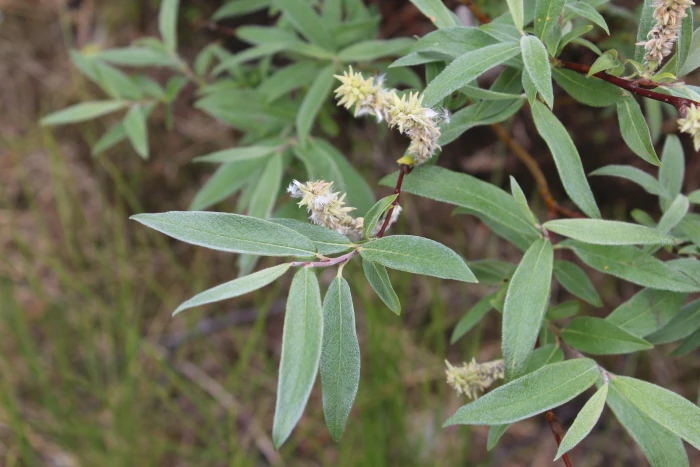Downy Willow
(Salix lapponum)
Downy Willow (Salix lapponum)
/
/

Dmitriy Bochkov
CC BY 4.0
Image By:
Dmitriy Bochkov
Recorded By:
Copyright:
CC BY 4.0
Copyright Notice:
Photo by: Dmitriy Bochkov | License Type: CC BY 4.0 | License URL: http://creativecommons.org/licenses/by/4.0/ | Rights Holder: Dmitriy Bochkov | Publisher: iNaturalist | Date Created: 2019-08-09T12:44:22-07:00 |

























Estimated Native Range
Climate Requirements for Pflugerville, Texas
| This Plant | Your Site | Plant Suitability for Your Location | ||
|---|---|---|---|---|
| • Precipitation | 12" - 141" | 33" | Your precipitation may be insufficient for this plant. Irrigate N" / year. | Irrigate N" / year |
| • High Temp. | 42°F - 83°F | 96°F | Your summers may be too hot for this plant. | Too hot |
| • Low Temp. | -44°F - 37°F | 37°F | Your winter temperatures are normal for this plant | Excellent |
This plant should grow well at your location with about N inches per year (Y minutes per month) of irrigation.
Summary
Salix lapponum, commonly known as Downy Willow, is a deciduous shrub native to the tundra and alpine regions of Northern Europe, including the Altai region, western Siberia, and extending to the Pyrenees and Bulgaria. It is particularly adapted to cold, harsh environments, often found at altitudes ranging from 660 to 2,950 feet. In Scotland, it thrives on rocky mountain slopes and cliffs, where it contributes to the local ecology by stabilizing soil and providing habitat for wildlife. Downy Willow typically grows up to 5 feet tall and is much-branched, with a rounded form.
The shrub is noted for its silvery-gray leaves that are covered with fine hairs, giving them a downy appearance. It produces catkins which bloom in early spring before the leaves fully emerge, adding early seasonal interest to the landscape. The flowers are not particularly showy, but they are valuable for pollinators. Downy Willow is appreciated for its ability to thrive in poor soils and its resilience in exposed, windy sites, making it suitable for ecological restoration projects and for use in rock gardens or as part of a mixed shrub border in cold climates. It requires full sun to part shade and prefers moist, well-drained soils. While generally low-maintenance, it can be susceptible to willow scab and other fungal diseases.CC BY-SA 4.0
The shrub is noted for its silvery-gray leaves that are covered with fine hairs, giving them a downy appearance. It produces catkins which bloom in early spring before the leaves fully emerge, adding early seasonal interest to the landscape. The flowers are not particularly showy, but they are valuable for pollinators. Downy Willow is appreciated for its ability to thrive in poor soils and its resilience in exposed, windy sites, making it suitable for ecological restoration projects and for use in rock gardens or as part of a mixed shrub border in cold climates. It requires full sun to part shade and prefers moist, well-drained soils. While generally low-maintenance, it can be susceptible to willow scab and other fungal diseases.CC BY-SA 4.0
Plant Description
- Plant Type: Shrub
- Height: 3-4 feet
- Width: 3-4 feet
- Growth Rate: Moderate
- Flower Color: N/A
- Flowering Season: Spring
- Leaf Retention: Deciduous
Growth Requirements
- Sun: Full Sun, Part Shade
- Water: Medium
- Drainage: Medium
Common Uses
Border Plant, Erosion Control, Low Maintenance, Water Garden
Natural Habitat
Tundra and alpine regions of Northern Europe, including the Altai region, western Siberia, and extending to the Pyrenees and Bulgaria
Other Names
Common Names: Downy Willow, Lappvier
Scientific Names: Salix lapponum, Diplima stuartiana, Salix alaternoides, Salix albiphila, Salix albiphila, Salix arenaria var. marrubiifolia, Salix buxifolia, Salix buxifolia, Salix comosa
GBIF Accepted Name: Salix lapponum